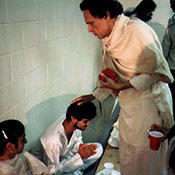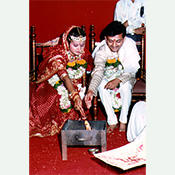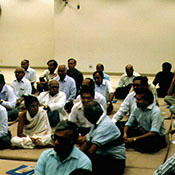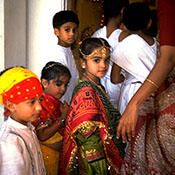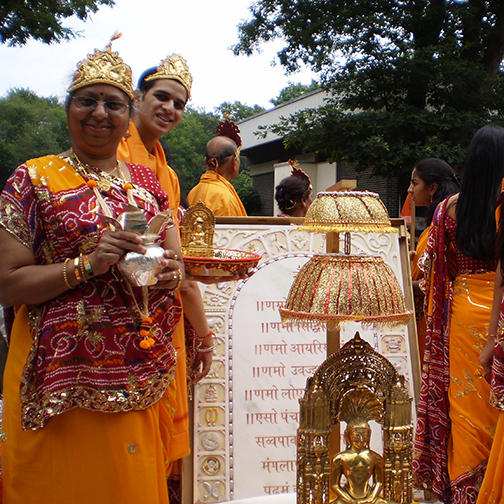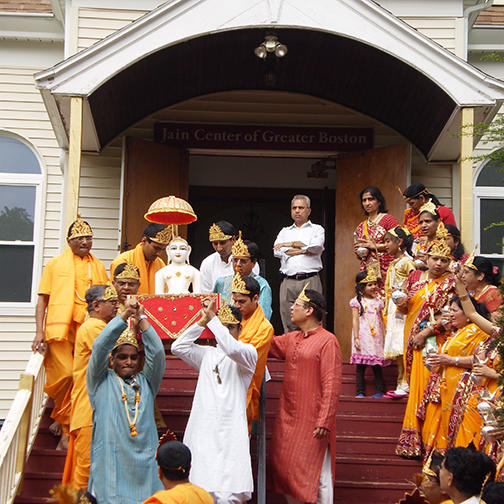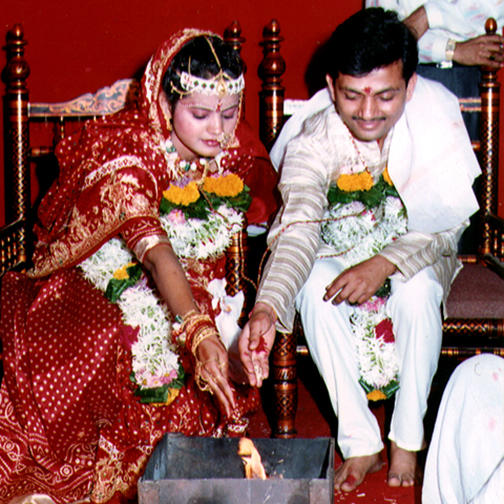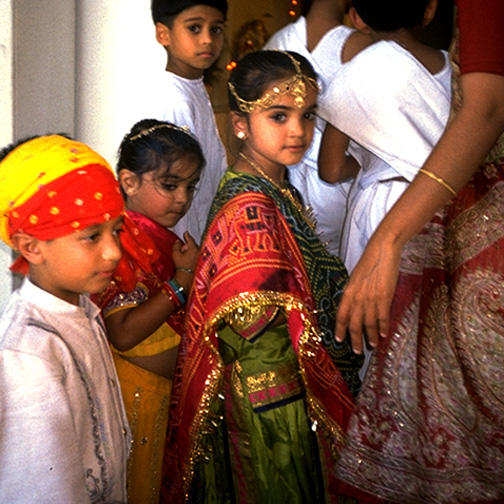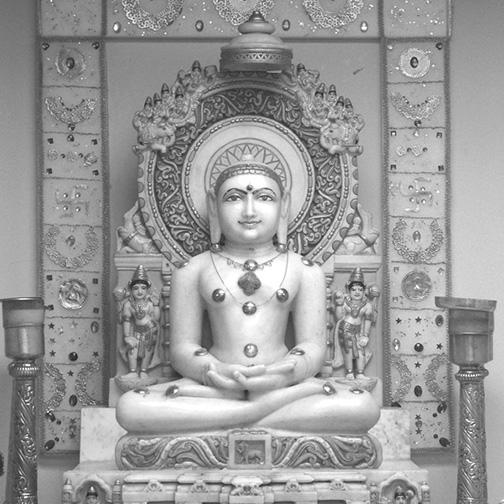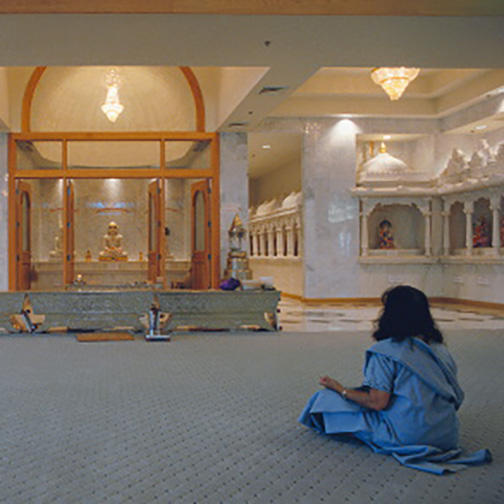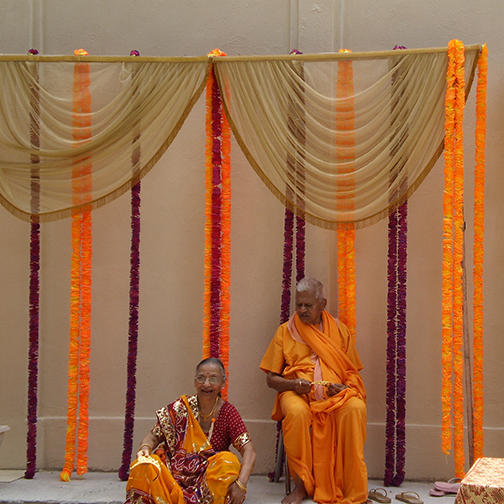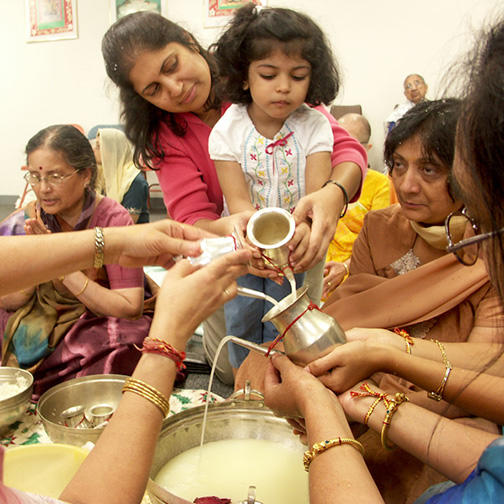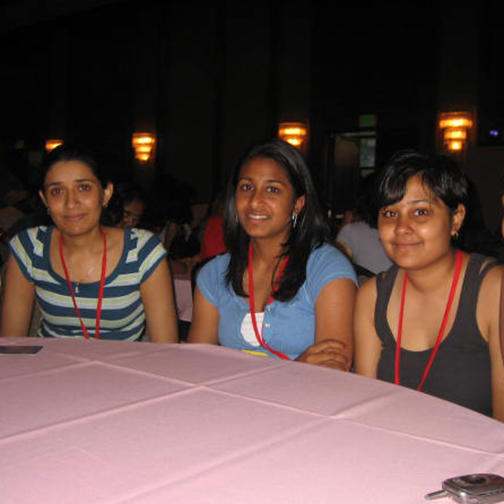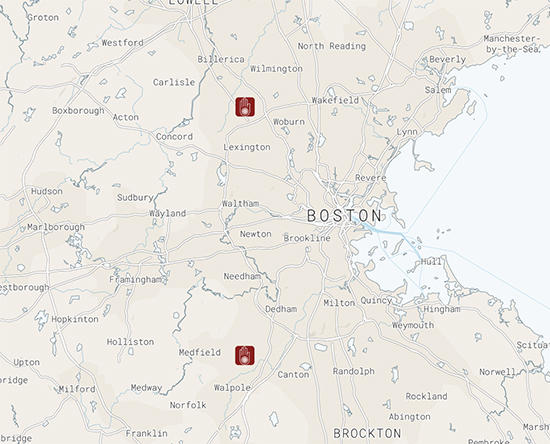Jainism
Jainism
Jainism
Essays
A Hospital for Birds
Mahavira
Tirthankaras: “Ford-Makers”
Jiva: The Souls of All Beings
Karma: Clouding of the Soul
Ahimsa: Reverence for Life
An Ethic for Living
Anekantavada: The Relativity of Views
Jain Renouncers: Sky Clad and White Clad
Mendicants and Laity
Temples and Images
The Jain Symbol
Jainism Outside India
Recent News
Jainism Timeline
Jainism in the World (text)
c. 850 BCE Parshvanath, Twenty-Third Tirthankara
In Jainism, a Tirthankara is a spiritual teacher who has overcome the cycle of death and rebirth (samsara). The first Tirthankara is said to have founded Jainism millions of years ago. Historians date the twenty-third Tirthankara, Parshvanath, to the eighth or ninth century BCE.
599 – 527 BCE Mahavira
The twenty-fourth Tirthankara, Mahavira, was born in the 6th century BCE near Patna in what is now the state of Bihar in India. He is said to have been a kshatriya, a prince or warrior, and to have renounced the world to seek self-realization. He attained kaivalya, luminous knowledge, at age 42 and taught for thirty years until his death.
360 BCE Beginning of Digambar/Shvetambar Split
It is said that at a time of famine in the 4th century BCE, part of the Jain community migrated south. When they returned, they found the monks of the north had compiled a version of the scripture with which they did not wholly agree and had taken to wearing simple white clothing rather than maintaining the “sky-clad” traditions. Thus the Shvetambar (“White-clad”) and Digambar (“Sky-clad”) schism constitutes the major sectarian split in the Jain tradition.
400s CE Formation of the Shvetambar Siddhanta
By the fifth century CE, Shvetambar Jains had compiled a canon, commonly called the Siddhanta. The canon includes 45 texts subsumed under six categories, the oldest and most venerated of which are the 12 angas, including the Acharanga.
400s CE Development of Jain Lay Community
By the early centuries of the common era, the Jain tradition had small communities throughout the Indian peninsula. Shvetambars were concentrated in north and west India, the Digambars were principally in south and central India. Although the monastic order remained the core of both Jain communities, in each case a growing number of lay practitioners associated themselves with the tradition. Beginning in the fifth century, Jain literature increasingly concerned itself with regulating non-monastic life, including proper etiquette toward monks and nuns, temple worship, and life-cycle rites.
1000s CE Digambar Community Concentrates in Maharashtra
The Digambar Jain community, which had previously enjoyed royal patronage in south and east India, fell into disfavor as Hindu theism gained popularity in the 11th century CE. Digambars migrated north and westward, settling in Karnataka and Maharashtra, where their descendants have continued to make their homes.
1100s CE Shvetambar Community Concentrates in Gujarat
The tide of Hindu theism that precipitated the emigration of Digambar Jains from southern India swept over northern India as well in the 1100s CE. This shift, coupled with the rise of Islam, resulted in a contraction of the Shvetambar community, which has been concentrated in Gujarat and Madhya Pradesh ever since.
1400s CE Sthanakvasi Reform Movement Develops
Beginning around the 10th century CE, there developed a class of monks who lived full-time in temples and exerted increasing control over temple resources. Charges of corruption and spiritual degeneration occurred with increasing frequency, culminating in 1451, when a Shvetambar layman named Lonka Saha launched the Sthanakvasi reform movement. Unlike most Jain groups, Sthanakvasis, or “dwellers in halls” (as opposed to temples), object to the veneration of images, claiming that such activity too easily degenerates into idol-worship. Monks of this movement are recognized by their practice of donning a cloth or mask over the mouth and nose to avoid inadvertently inhaling and thus harming minute life forms.
1500s CE Taranapantha Reform Movement Emerges
Apparently influenced by the Sthanakvasi movement, a small group of Digambars under the leadership of a man by the name of Taranasvami emerged in the 16th century CE. This group became known as the Taranapantha Reform Movement, and like the Sthanakvasis, also banned the worship of images.
1700s CE Birth of Terapantha Reform Movement
Followers of Jainism agree that a person should eschew any action that would harm a living being. But in the eighteenth century CE, a Sthanakvasi monk named Bhikhanji also asserted that a person should avoid any action that would directly affect another sentient being, including saving its life. Bhikhanji believed that to give aid to another not only indicates that one has failed to practice total renunciation, but makes one responsible for any harm that that being may cause in the future. It is said that Bhikhanji’s reform movement is called Terapantha, “the path of the thirteen,” because he could only gather twelve disciples to follow his radical ideas. Today, the Terapantha movement continues as a small but vocal minority of the Shvetambar tradition.
1869 – 1948 CE Friendship of Mohandas Gandhi and Raychandbhai Mehta
Mohandas Gandhi was arguably the greatest champion of nonviolence in the 20th century. Although a Hindu, his appreciation for the profound spiritual significance of ahimsa derived principally from the conversations and correspondence he had with Raychandbhai Mehta, a prominent Jain layman. According to Gandhi, the three men who most deeply influenced his thought were Tolstoy, Ruskin, and Raychandbhai.
1970 CE Shri Chitrabhanu Travels to Geneva
In 1970, Shri Chitrabhanu became the first Jain monk to break the injunction against traveling by airplane when he flew to Geneva to attend the second Spiritual Summit Conference. He arrived in the United States one year later to establish the Jain International Meditation Center in New York and to found and inspire many other Jain centers across the U.S. and the world.
1990 CE “Jain Declaration on Nature”
The “Jain Declaration on Nature'' was a statement on the Jain philosophy of non-violence and its relevance to the ecological crisis. The declaration was presented in 1990 by an international group of Jain leaders to H.R.H. Prince Philip, Duke of Edinburgh.
2010 CE Jain Temple Opened in Belgium
In 2010, the largest Jain temple outside of India opened its doors in a suburb of Antwerp to serve the thousands of Jains in the area, many of whom are involved in the diamond trade. The community’s spiritual leader, Ramesh Mehta, was also a member of the Belgian Council of Religious Leaders, illustrating the strengthening relationship between the Jain community and other European faith groups.
Jainism in America (text)
1893 CE V.R. Gandhi at World’s Parliament of Religions
Virchand R. Gandhi (1864-1901), a Bombay lawyer, was the sole Jain at the 1893 World’s Parliament of Religions in Chicago. Following the Parliament, V.R. Gandhi stayed in the U.S. for two years to give some 535 lectures on such topics as Jainism, Yoga, Hindu culture, and Indian philosophy.
1893 CE Shri Lalan Comes to the U.S.
A Jain scholar named Shri Lalan came to the U.S. in 1893 and stayed for over four years. Inspired by the Jain teachings of Shri Lalan, an American woman, Mrs. Howard, became a disciple and a vegetarian.
1896-97 CE V.R. Gandhi Helps Organize Famine Relief
On a second trip to the U.S. and England in 1896-1897, V.R. Gandhi joined with Charles C. Bonney, who had been President of the 1893 World’s Parliament of Religions, to organize a Famine Relief Committee for India. This committee sent about $10,000 and a steamer full of corn to India.
1904-05 CE Jain Temple Replica at St. Louis World’s Fair
A replica of the Jain temple at Palitana in Gujarat was sent by the British government of India to the St. Louis World’s Fair Exposition in 1904. After being in storage for several decades, the temple replica was purchased by the Summa Corporation, which placed it in their Castaways Hotel in Las Vegas, Nevada. In 1995, the hotel donated the temple replica to the Jain Center of Southern California.
1919 CE Life and Stories of Parsvanatha Published
In 1919, Maurice Bloomfield, Professor of Sanskrit at Johns Hopkins University, published Life and Stories of the Jaina Savior Parsvanatha, one of the first Jain texts published in the U.S.
1933 CE Jain at World Fellowship of Faiths in Chicago
Champatrai Jain, a lawyer from India, presented a talk on “Ahimsa as the Key to World Peace” at the 1933 World Fellowship of Faiths meeting in Chicago.
1959 CE Formation of Jain Groups in the U.S.
In 1959, Jains in New York City organized an informal society. A second group was formed in Michigan soon after.
1966 CE First American Jain Center Established
The first Jain Center in the U.S. was established in New York City in 1966 by a small group of Jain immigrants. Three years later, another Jain center was established in Chicago.
1971 CE Gurudev Chitrabhanu First Visits U.S.
Gurudev Chitrabhanu visited the U.S. in 1971 to spread the message of Jainism and non-violence. His trip made him the first Jain monk to part with the monastic tradition of travel restriction. Later, having left the traditional monkhood, he returned to the United States and became one of the most important religious leaders of the American Jain community. Chitrabhanu established the Jain Meditation International Center in New York City in 1974.
1973 CE Jain Center of Greater Boston Established
Since its founding in 1973, the Jain Center of Greater Boston has made a significant contribution to Jainism in the U.S., promoting Jain philosophy and community. In 1979, the Center began publishing the Jain Study Circular, which has developed nationwide circulation. That same year, the Center’s “Directory of Jains in North America” first appeared, and today is regularly updated. In 1981, the Center became one of the first Jain Centers in North America to have its own temple.
1975 CE Acharya Sushil Kumar First Visits U.S.
Sushil Kumar became a monk in the Shvetambar Sthanakvasi sect of Jainism at the age of 15. He first came to the U.S. in 1975, and was the first Jain monk to travel abroad regularly while remaining a monk — a controversial move. He traveled extensively throughout the world and was an active participant at world conferences on peace and interreligious cooperation. Acharya Sushil Kumar passed away in 1994, at the age of 68.
1975 CE Jain Society of Greater Detroit
The Jain Society of Greater Detroit began in 1975 with about 50 families, but grew to over 250 families by the early 1990s. The Society operates a Jain study class for 100 children, hosts a summer camp, sponsors visiting lectures, and celebrates the Jain festivals. It has designated Thanksgiving Day as Ahimsa Day, a day of non-violence. In 1991, construction began on a million-dollar temple in Farmington Hills, a Detroit suburb.
1980 CE Sushil Kumar Founds International Mahavir Jain Mission
The International Mahavir Jain Mission (IMJM) was founded in Cleveland, Ohio in 1980 by Acharya Sushil Kumar. The purposes of the IMJM include promoting understanding of Jain scriptures, teachings, and practices, and cultivating academic and cultural exchange among Jains. Until his death in 1994, Kumar was the chairperson of IMJM. The society headquarters later moved to Siddhachalam in New Jersey.
1981 CE April 26 Proclaimed as a Day of Ahimsa in Cleveland
In 1981, the mayor of Cleveland and the city’s Jain Society proclaimed April 26, 1981 as a Day of Ahimsa (non-violence) in Cleveland, Ohio.
1981 CE Federation of JAINA Organized
In 1980, the Jain Center of Southern California voted to host a conference that would bring together representatives of all the Jain centers in North America. The conference took place over Memorial Day weekend of the following year. During this three-day meeting, the Federation of Jain Associations in North America (JAINA) was created, and a constitution for the new organization was drafted. JAINA continues to hold national conventions every other year, having convened in New York City (1983); Detroit (1985); Chicago (1987 and 1995); Toronto (1989); Stanford, California (1991); and Pittsburgh (1993).
1983 CE Siddhachalam Established in New Jersey
Siddhachalam was founded in New Jersey in 1983. This rural ashram and temple complex, established by Acharya Sushil Kumar on 108 acres in the foothills of the Pocono Mountains, was created as the first Jain tirtha or pilgrimage place outside of India. The rural center is a residential community for Jain monks and nuns and a retreat center for laity.
1985 CE Jain Digest Begins Publication
Jain Digest, a quarterly publication of the Jain Associations in North America (JAINA), was launched in 1985. The digest contains news from Jain societies throughout the U.S. and Canada. Jain Digest today has readers around the world.
1986 CE First Public Exhibit of Jain Paintings
In 1986 the New York Public Library organized “The World of Jainism,” the first public exhibition of Jain paintings in the U.S. Paintings from the manuscript Kalpa Sutra and other scriptures from the 15th to 19th centuries were featured. The exhibition of Jain paintings was part of the library’s participation in the Festival of India, a two-year-long celebration of Indian culture in the U.S.
1986 CE Indo-American Jain Conference
The Indo-American Jain Conference of the World Jain Congress was convened at Siddhachalam on September 26-28, 1986. The theme of the conference was Jain unity. Twelve hundred participants came from India, Europe, the U.S., Canada, and Africa. The construction of temples, literature, and world peace were among the topics discussed at the conference.
1987 CE Jain Study Circle Established
The Jain Study Circle was established in 1987 to promote study and understanding of the Jain tradition. The Circle organized study groups and took over responsibility for publishing the Jain Study Circular, which had been instituted by the Jain Center of Boston.
1988 CE Jain Temple Opens in Los Angeles
Members of the Jain Center of Southern California initially held their meetings in various community spaces. But in 1988, the JCSC opened their first temple, Jain Bhavan, in Los Angeles.
1991 CE Images Installed at Siddhachalam
From August 2-11, 1991, several thousand Jains came to the hilly countryside near Blairstown, New Jersey, to witness the installation of images of the Tirthankaras in the newly completed temple at Siddhachalam, the first Jain ashram and tirtha in the U.S. The event, called a Pratishta Mahotsav, was overseen by the founder of Siddhachalam, Acharya Sushil Kumar.
1992 CE American Jains at UN Earth Summit
Sushil Kumar represented American Jains in several interreligious events held in conjunction with the U.N. Earth Summit in Rio de Janeiro in 1992.
1992 CE First Chaturmas in California
In 1992, the Jain Center of Northern California organized a four-month stay of two Jain monks called Samans, from an order of monks and nuns created by Acharya Tulsi in India specially to be able to travel and teach abroad. During their visit, the two gave lectures in Gujarati, Hindi, and English and provided instruction in Preksha meditation.
1993 CE Dedication of the Jain Temple in Chicago
In 1993, the Jain Society of Metropolitan Chicago dedicated a new temple in Bartlett, Illinois, a western suburb of Chicago. The temple was the largest Jain temple in the U.S. and contains both Shvetambar and Digambar images.
1993 CE Jainism Online
The Jain Bulletin Board System was launched on the Internet in 1993 to provide online information about Jainism. Jain presence online only continued to expand during the following decades, connecting Jains around the world as well as providing a platform for American Jains to engage with one another and with the wider American community.
2001 CE 9/11 Attacks Cause Hateful Backlash
While perpetrators of post-9/11 hate crimes targeted Muslims, many individuals of South Asian and Arab descent were also victims. Along with many communities whose members fit a similar racial profile, Jains collaborated to clarify their religious and cultural traditions to an American audience.
2010 CE Growth and Expansion of Jain Communities
The Jain community of Boston, among others throughout the U.S., experienced so much growth in the early 2000s that a larger building was required for the Jain Center of Greater Boston (JCGB). In 2010, community members moved to a new site in Norwood, a former synagogue that now houses classrooms for Jain education, a large event space, and a remodeled temple. The growth and formalized establishment of Jains in the U.S. is visible in communities across the country, especially apparent in such national groups as JAINA and the many conferences, youth programs, scholarships, and events they oversee.
Selected Publications & Links
Explore Jainism in Greater Boston
Jains first came from India to America in the late 1960s, establishing the Jain Center of Greater Boston (JCGB) in 1973. From 1981 until 2010, members of the JCGB gathered in a former Swedish Lutheran church in Norwood. Since 2010, JCGB have gathered in their own, purpose-built derasar (temple) in Norwood. A second local organization, the Jain Sangh of New England (JSNE), formed in 2000.
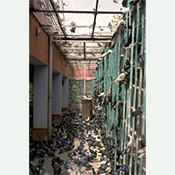

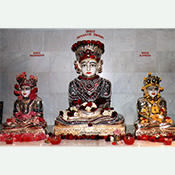
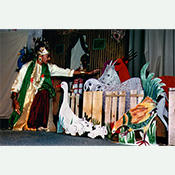

 Since all beings (humans, animals, and plants) in Jainism have a soul, the concept of ahimsa (nonviolence) is central to the tradition. The concept of ahimsa informs every aspect of Jain practice, behavior, and life. As a result Jains are vegetarians, and Jain monks and nuns often take precautions to avoid stepping on or injuring insects....
Since all beings (humans, animals, and plants) in Jainism have a soul, the concept of ahimsa (nonviolence) is central to the tradition. The concept of ahimsa informs every aspect of Jain practice, behavior, and life. As a result Jains are vegetarians, and Jain monks and nuns often take precautions to avoid stepping on or injuring insects.... 
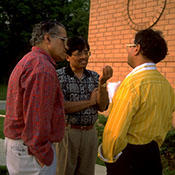
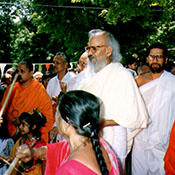
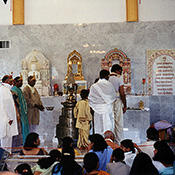 Jain monastics depend on the laypeople for food and essentials. Possessing no permanent home, Jain monastics travel on foot and teach Jain tradition and scripture to laypeople. The monastics live a life of constant travel, with the exception of monsoon season, when they spend four months in one place....
Jain monastics depend on the laypeople for food and essentials. Possessing no permanent home, Jain monastics travel on foot and teach Jain tradition and scripture to laypeople. The monastics live a life of constant travel, with the exception of monsoon season, when they spend four months in one place.... 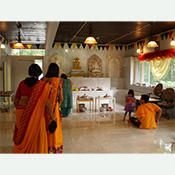
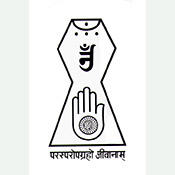
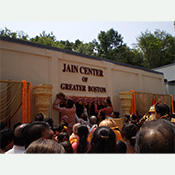
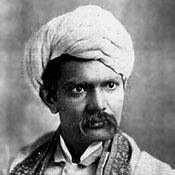
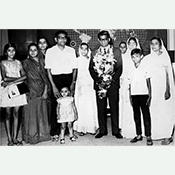
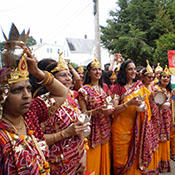
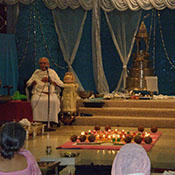

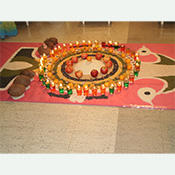
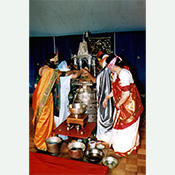
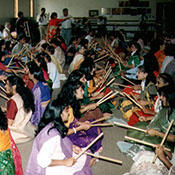
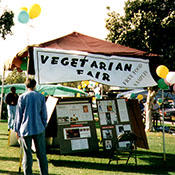

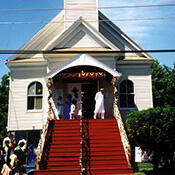 The distinguishing feature of American Jainism is the relative lack of close lay-monastic interactions that categorizes the Jain tradition in India. The sectarian nature of Jain monasticism in India gives way to an overarching sense of unity and solidarity in American Jainism....
The distinguishing feature of American Jainism is the relative lack of close lay-monastic interactions that categorizes the Jain tradition in India. The sectarian nature of Jain monasticism in India gives way to an overarching sense of unity and solidarity in American Jainism.... 